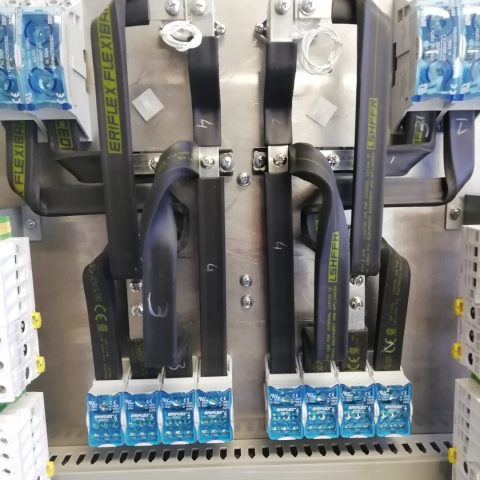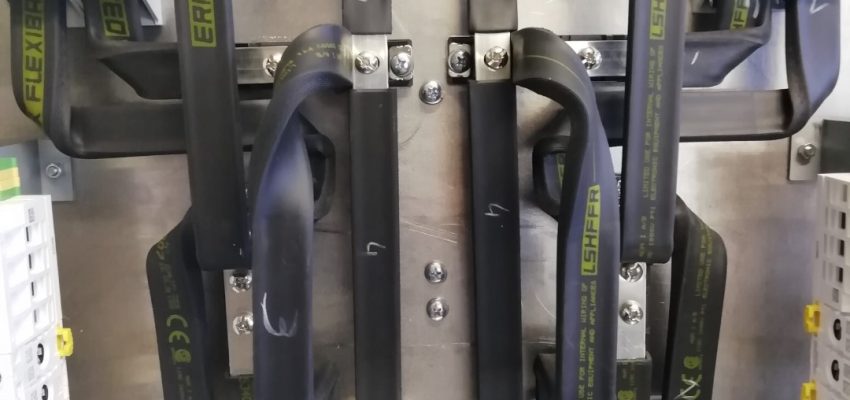At nVent, we focus our ESG efforts in three areas: People, Products and Planet. One of the key features of our Products pillar is our three Product pillar ESG categories: Eco-Friendly Designs, Eco-Friendly Materials and End-User Safety. But what do these terms mean? And how do they contribute to our ESG efforts? This is the first article in our series on our three Products pillar ESG categories. By the end of the series, you will know what our Products pillar ESG categories are, why they matter and how we apply them in our day-to-day work developing nVent products and solutions.
Importantly, we use our three Products pillar ESG categories in the ESG scoring portion of our New Product Introduction process. Whenever a new product or solution is proposed by a member of our team, the project goes through a series of checkpoints, (or gates) that help us determine whether to spend time and resources on its development. An important part of that process is scoring for ESG impact. In order for a project to earn points in the ESG scoring system, it needs to contribute positively in at least one of our three categories. If it contributes to more than one, it earns even more points.
In this piece, we’ll learn more about Eco-Friendly Designs. Read the rest of our series to learn more about our Eco-Friendly Materials and End-User Safety categories.
At nVent, when we talk about Eco-Friendly Designs, we are talking about building efficiencies into our products—lowering environmental impact of our products through the product designs themselves. This can take many forms, including improving energy efficiency for our end customers, extending the serviceable lifespan of our products to reduce the need for new materials, utilizing minimal and recyclable packaging, building in remote access technology and more.
Our precision liquid cooling technologies for data center customers show our principle of Eco-Friendly Designs in action. These solutions regulate heat in data center server racks, keeping IT equipment at appropriate operating temperatures. Liquid cooling solutions can help data center customers increase data processing capacity while minimizing environmental impact. Liquid cooling is more efficient and effective than air cooling, which allows data centers to fit more servers and other IT equipment in a single rack, helping them scale operations without increasing physical footprint. Liquid cooling technologies also require less energy relative to air cooling solutions—using less energy on cooling allows data centers to use more energy to power equipment while keeping their carbon footprint under control.
Another great example of Eco-Friendly Designs is our cable and busbar replacement connection solutions from our nVent ERIFLEX portfolio. As our customers across industries look to reduce their product footprint by building solutions that are more space efficient as well as more energy efficient, replacing cables can be an important step. In products like electric vehicle chargers, wind turbines and more, engineers often want to design lightweight, compact solutions. Cables often cannot safely meet the tight bending radiuses these designs require. Our flexible busbars can be safely bent into compact turns while offering 20% more electrical conductivity and 40-50% less material use than cable. This efficiency and material reduction in the nVent solution—alongside the efficiency and material reduction it helps create for end users—helps drive sustainability.
Our peel and stick membranes for floor heating applications also demonstrate Eco-Friendly Designs. When installing underfloor heating, contractors use crack isolation membranes between the tile and substrate to prevent tiles from cracking and to secure the heating cables. Typically, a layer of thinset is required both underneath and on top of the membrane. However, our peel and stick membrane requires only one layer of thinset. This reduces the amount of cement and water used by contractors installing floor heating up to 50 percent.
Adding efficiency to products is good for customers and the environment. Eco-Friendly Designs is an important consideration in our product development process because we believe our products and solutions have a key role to play in making electrical systems more efficient and more resilient. There are many contributing factors to the overall sustainability of a solution, but using energy efficiently and reducing raw material use, both in our products and in those of our end users is a key consideration. As the electrification of everything drives the growth of new technologies, powering and connecting these technologies efficiently and sustainably will be essential.


